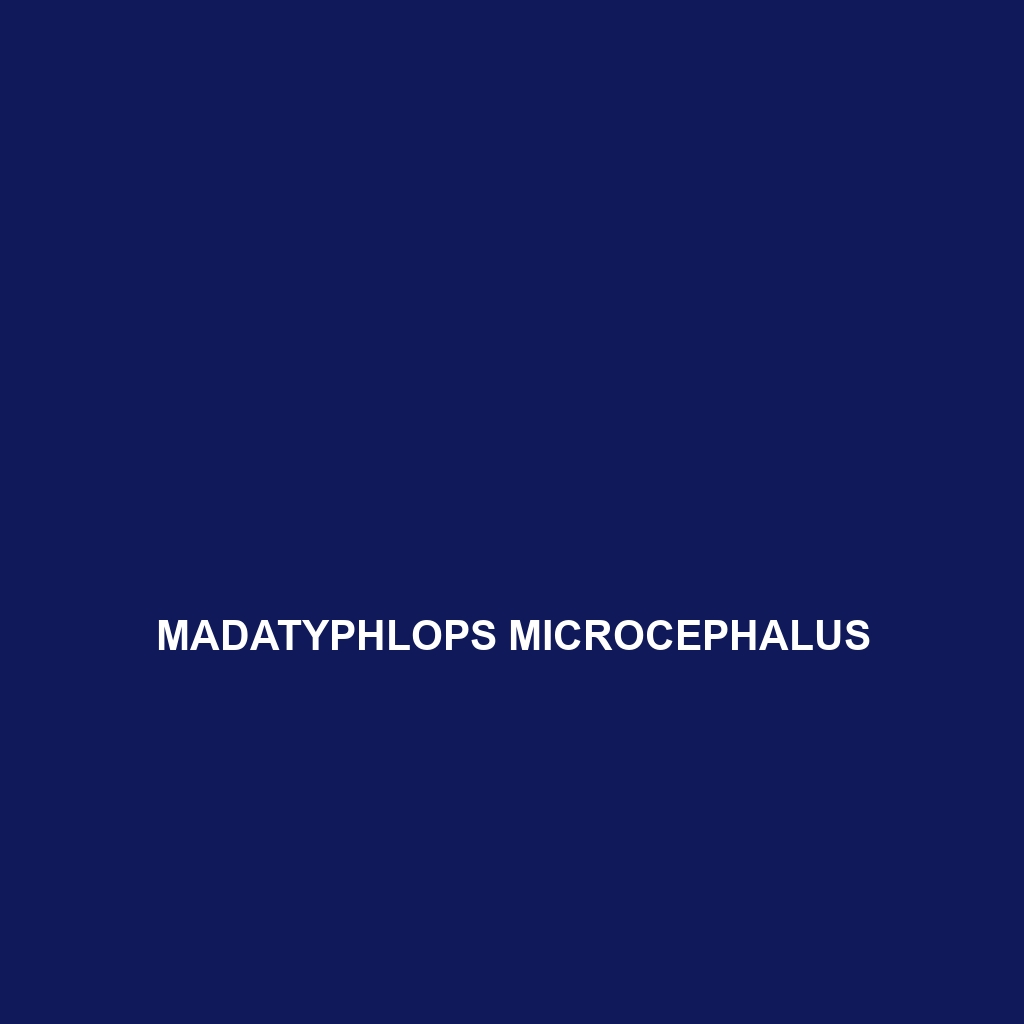Common Name
Madatyphlops microcephalus
Scientific Name
Madatyphlops microcephalus
Habitat
Madatyphlops microcephalus is primarily found in the lush, thriving environments of Madagascar, specifically in the dense rainforests and savannas that cover much of the island. These habitats provide a rich mix of vegetation and humidity that support diverse flora and fauna. The climate in these regions is generally tropical, characterized by a warm temperature range and consistent rainfall. The species also prefers areas with loose, well-aerated soil, as this allows for easier burrowing and access to prey. The unique ecosystem of Madagascar includes various environmental conditions that foster the survival of Madatyphlops microcephalus, highlighting the importance of preserving these habitats.
Physical Characteristics
Madatyphlops microcephalus is a small, legless species of snake, typically measuring between 25 to 35 centimeters in length. Its body is elongated and cylindrical, perfectly adapted for a burrowing lifestyle. The coloration varies but often features a blend of brown and reddish hues, providing effective camouflage within its forest floor habitat. Notable are its highly specialized, small heads that possess unique adaptations, such as a reduced number of scales around the eyes, which allows it to navigate through tight soil and leaf litter. The smooth texture of its skin aids in burrowing and reduces friction as it moves through the ground.
Behavior
The behavior of Madatyphlops microcephalus is primarily adapted to its subterranean lifestyle. This species exhibits nocturnal behavior, becoming active during the night when it hunts for prey. Its behavior includes burrowing and creating intricate tunnels in the soft soil, which not only serves as a refuge from predators but also as a hunting ground. Social interactions are minimal, as they tend to be solitary creatures, only coming together during mating seasons. Observations suggest it has unique habits when it comes to sensing the environment, employing a keen sense of smell to find food underground, often indicated by the presence of small insect populations.
Diet
Madatyphlops microcephalus is an insectivore, primarily feeding on a diet consisting of small invertebrates such as ants, termites, and other similar organisms. Its feeding patterns involve burrowing into the ground to locate prey, using its highly developed senses to detect movement or vibrations in the soil. This predatory behavior is crucial for maintaining the balance of insect populations in its ecosystem, demonstrating the ecological importance of this species. The ability to consume such insects helps control their numbers, further highlighting the species’ role in its environment.
Reproduction
The reproductive cycle of Madatyphlops microcephalus typically occurs during the rainy season, from November to January. Mating rituals involve males performing courtship behaviors, including tactile communication with females. Following mating, the gestation period varies, usually around two to three months, after which females give birth to live young. The typical litter size ranges from 2 to 6 offspring, which are born fully formed and begin to mature rapidly. Parental behaviors are limited; however, mothers tend to remain with their young for a short time before the offspring disperse to begin their own lives. This rapid maturation helps increase the chances of survival in a habitat filled with potential threats.
Conservation Status
Currently, Madatyphlops microcephalus is listed as vulnerable due to habitat destruction largely caused by deforestation, agriculture, and urban development in Madagascar. Conservation efforts are crucial to protect this species, focusing on habitat preservation and the establishment of protected areas to ensure its survival. Challenges remain significant, as the unique ecosystems of Madagascar are under constant threat from human activities. Awareness campaigns and environmental laws are essential to mitigate these threats and support conservation initiatives aimed at protecting not only Madatyphlops microcephalus but also the biodiversity of its native habitat.
Interesting Facts
One fascinating aspect of Madatyphlops microcephalus is its remarkable ability to sense vibrations through its skin, a feature that enhances its hunting strategies in the dark underground environment. Additionally, this species contributes to the culture of Madagascar, as local traditions often reference the significance of reptiles in the ecosystem. Studies continue to reveal more about this unique species, emphasizing its importance and the need for further research to understand its ecological role fully.
Role in Ecosystem
Madatyphlops microcephalus plays a vital role in its ecosystem as a predator, regulating the populations of insects within its habitat. This predatory behavior helps maintain a balanced food web, making it a critical component of the biological diversity in Madagascar. By controlling insect populations, it indirectly supports plant health and growth, contributing to the overall productivity of its environment. Its interactions with other species, including its potential role in nutrient cycling, highlight the interconnectedness of species within its ecosystem, demonstrating how a small snake can have significant ecological impacts.
